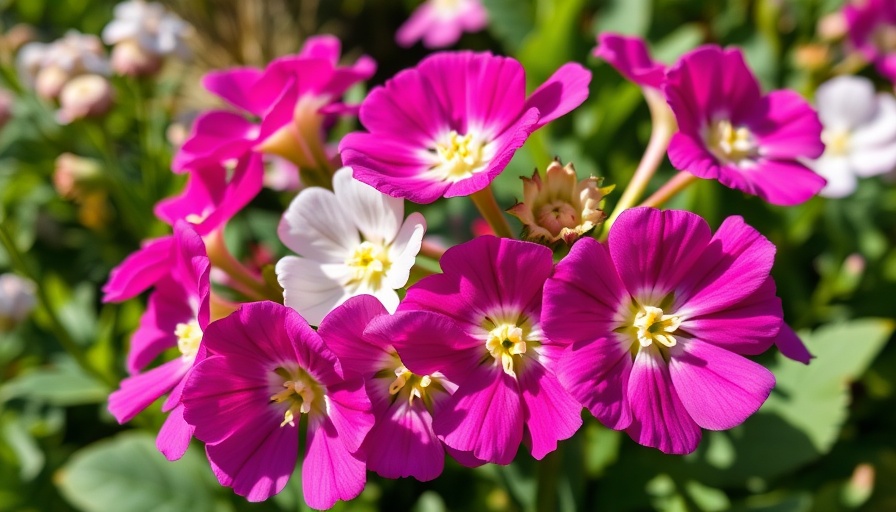
Why Sweet William Flowers Are Ideal for Your Garden
Sweet William flowers (Dianthus barbatus) are not just visually stunning with their vibrant colors and delightful fragrance; they also bring numerous benefits to urban and suburban gardens. These short-lived perennials are beloved by gardeners for their resilience and adaptability, making them a perfect choice for those looking to beautify their spaces. Blooming in late spring and early summer, these flowers thrive in USDA zones 3-11, appealing to a broad audience of gardening enthusiasts.
Growing Sweet William Flowers: A Step-by-Step Guide
The process of planting and caring for Sweet William flowers is straightforward, making it accessible even for novice gardeners. Start by choosing a sunny spot with well-draining soil enriched with organic matter. This ensures healthy growth—I suggest adding compost before planting. When sowing seeds, plant them 1/8 inch deep and give each plant ample space, around 6-12 inches apart, for optimal airflow and sunlight exposure.
Choosing the Right Cultivars for Your Garden
With many cultivars available, selecting the right variety of Sweet William can elevate your garden's aesthetics. Classic options include the traditional red and white cultivars, while newer hybrids come in striking shades of mauve, maroon, and purple, often with unique patterns. Consider factors such as bloom size, color, and fragrance when choosing to ensure they meet your garden's vision.
Maintaining Your Sweet William Plants
Regular maintenance is crucial to keep your Sweet William flowers healthy. Adequate watering, especially in the hot summer months, is essential. Aim for a moderate watering schedule, allowing the soil to dry slightly between waterings. Additionally, deadheading spent blooms promotes further flowering and helps maintain the plant's vigor.
Navigating Pests and Diseases
Every gardener faces agricultural hurdles, and Sweet William flowers are no exception. Common pests include aphids and slugs, which can be managed with organic pest control options or natural deterrents like diatomaceous earth. Ensuring proper spacing and air circulation can help prevent fungal diseases, promoting a healthier growing environment.
Using Sweet William in Your Garden Design
These flowers are not just a pretty face; they can be strategically utilized in various garden designs. Their tall stems make them ideal for borders, while their vibrant colors can brighten empty spots or contrast with lower-growing plants. Consider mixing with other perennials or annuals for a dynamic garden display.
Benefits Beyond Aesthetics
Incorporating Sweet William flowers into your garden isn’t just about beauty; they also contribute to biodiversity. They attract pollinators, including bees and butterflies, essential for maintaining healthy ecosystems. Additionally, as part of a companion planting strategy, they can enhance the growth of neighboring plants.
Conclusion: Transform Your Garden with Sweet William Flowers
Sweet William flowers offer an excellent avenue for both innovation and beauty in your garden. For those interested in a climate-friendly gardening approach, these hardy blooms can thrive with minimal resources while attracting beneficial insects. Start your journey with Sweet William today and transform your outdoor space into a lush, vibrant oasis. Remember, gardening is not only nurturing plants but also cultivating a connection with nature and your community. Dive deeper into your gardening journey and explore the variety of resources available to enhance your experience.
 Add Row
Add Row  Add
Add 




Write A Comment